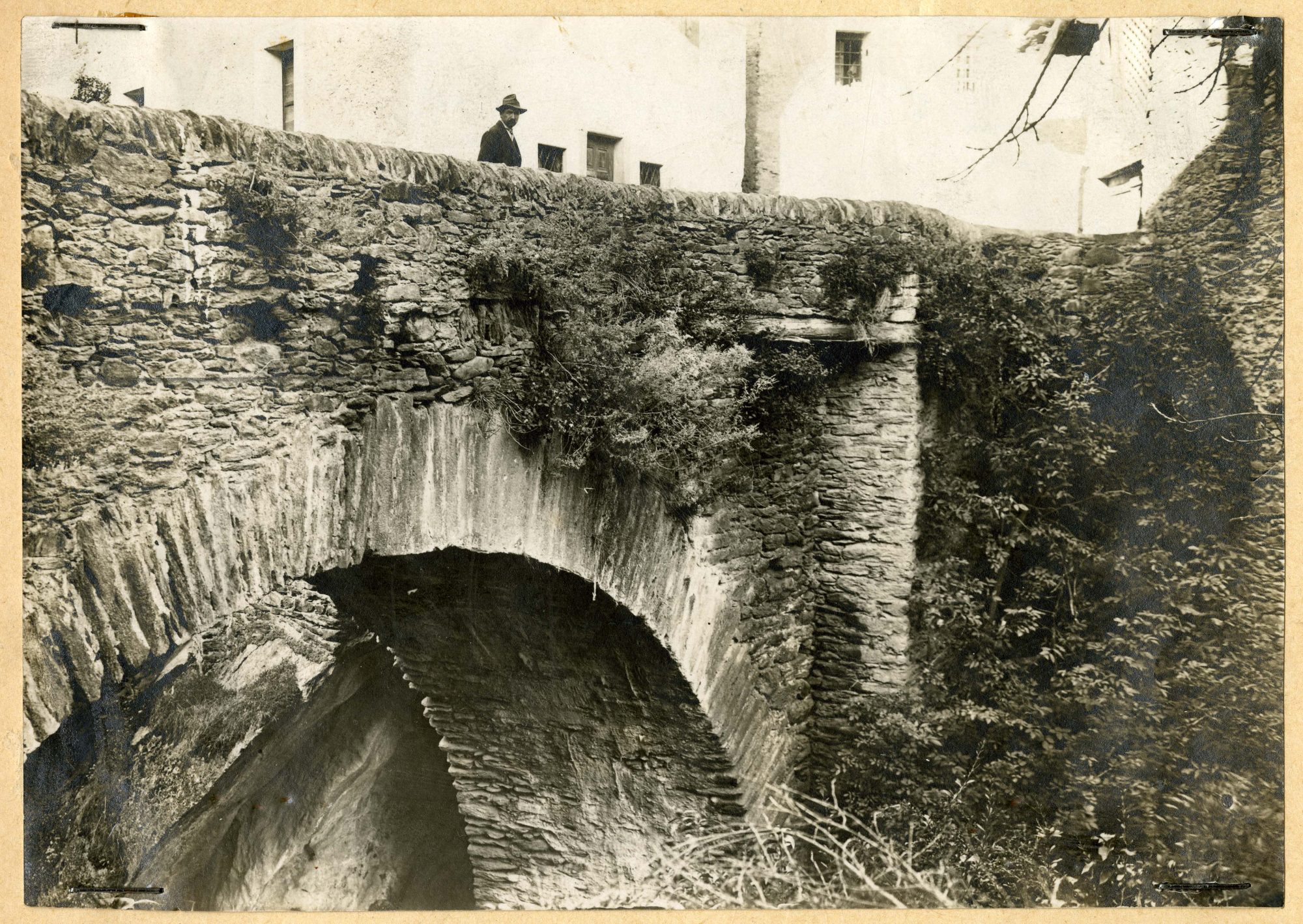07/07/2023 | Partner: Regione Valle d'Aosta
The Leverogne Bridge
Along the Via delle Gallie route: a surfacing memory, step by step…
Witness to the slow sequence of events, suspended between the memory of the oldest crossing and the use of today’s crossings, , this bridge is still the gateway to the ancient village of Leverogne.

Context
Nestled between the shores of the Dora di Valgrisenche river, where the ancient village of Leverogne develops, this bridge has been for centuries an obligatory passage for troops, merchants and pilgrims who, after passing the gorge, could continue towards the hills and cross border territories, or descend to the valley in the direction of Aosta.
The centuries-old persistence of a strategic interest located in this place, linked both to the crossing of the narrow gorge and to the natural predisposition for the installation of productive activities, is witnessed by historical sources and archaeological evidence still locally visible today.
The chapel, today dedicated to St. Gotthard and St. Gratus – but until 1672 dedicated to the Nativity of the Virgin, was erected in 1365 to protect the crossing .After numerous renovations, including the very important ones of the 1760s, it came to us resting exactly where the left abutment of the ancient Roman bridge had to be and leaning against the parapet of today’s bridge, demonstrating the close connection between the two architectures in the sequence of the events of which they were both protagonists.
History
Built by the Romans to cross the tumultuous Dora di Valgrisenche along the Via delle Gallie route, this bridge was originally made of wood, with bolts and beams of the deck recessed west in the rock and east in the pile of masonry whose existence can still be appreciated, incorporated into the most modern houses of the village. The Roman structure, not without obvious maintenance and renovations, remained active until 1691, the year in which it was destroyed during the retreat of the French armies.
Immediately rebuilt in wood, it was soon necessary to replace it with a more solid and definitive stone structure; in 1766 the new bridge was already working, although its position was moved a little further downstream.
The construction of the new stone bridge was the occasion for major changes including the expansion of the chapel and its probable rotation to allow direct access from the main path due to the road network modification.
Over the last few decades, new transport needs have led to the construction of other connections both upstream and downstream: a bridge for cars a little higher to reach the Valgrisenche valley, one for the railway, one for the highway, and one for the regional road. Modern junctions, of course, but that clearly clarify the importance of a core sector for road network since Roman times.
Architecture
Crossing the stream at about 18 m high, with a single arch formed by wedge-shaped lithic blocks, the current bridge is the result of numerous renovations and adaptations, well recognizable by the different masonry techniques used.
The parapet, made up of stone elements placed at the top, has been raised with a railing to adapt it to the modern flooring, much higher than the original, which covers the passage of numerous subservices.
The masonry shoulders of the Roman bridge are still a few meters upstream. On the right-hand side of the river, above a foundation base, 12 pontoon holes are visible, quadrangular recesses used to position the support bolts of the single span bridge.


